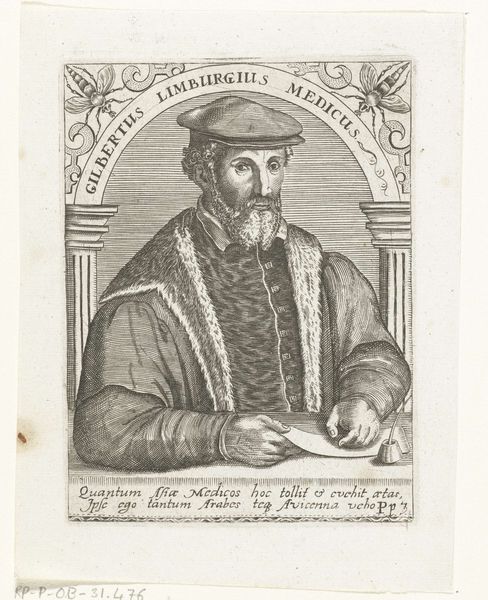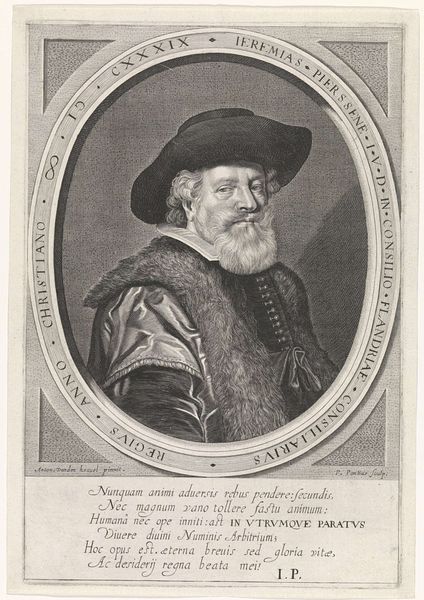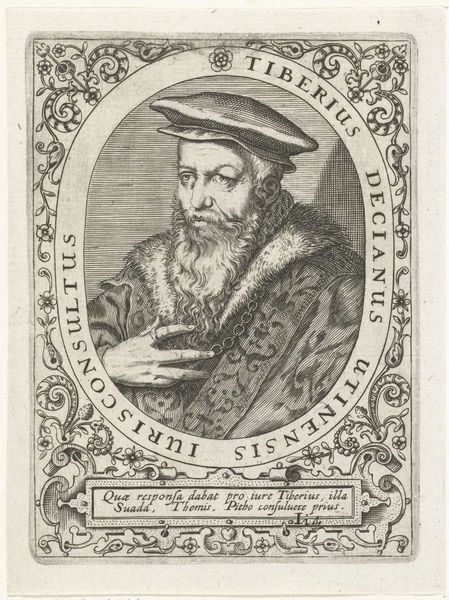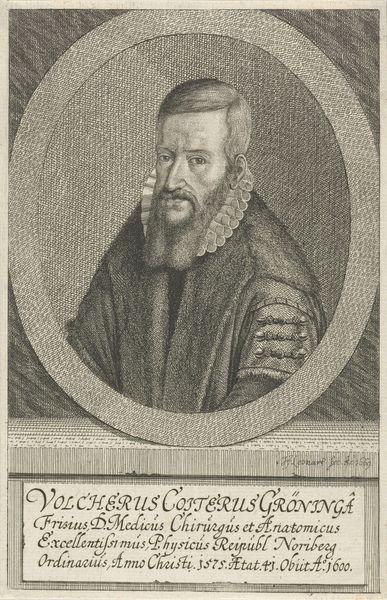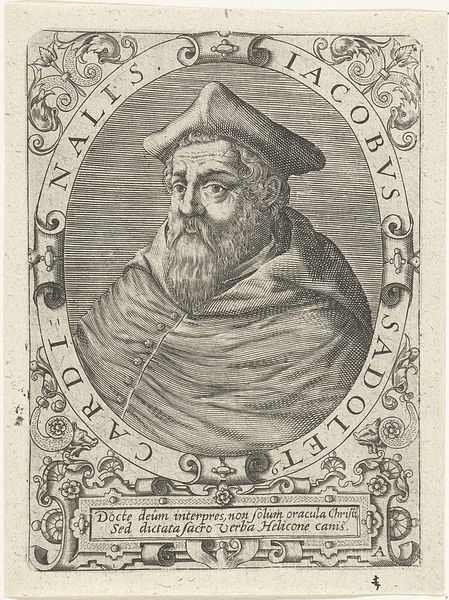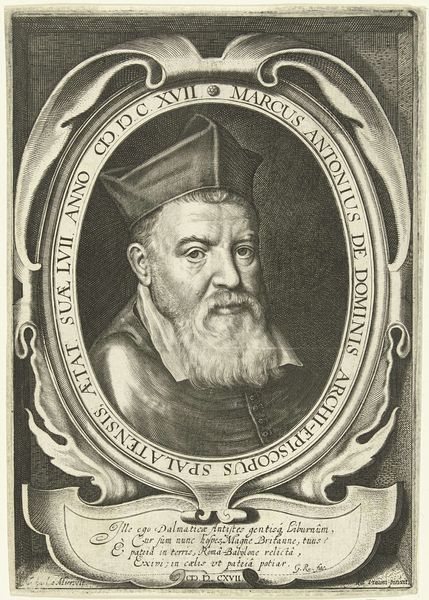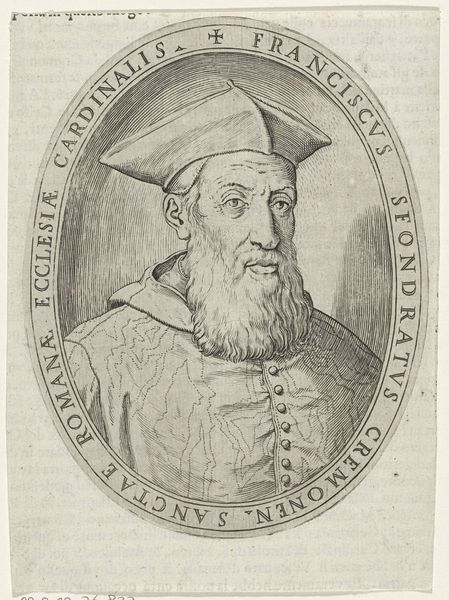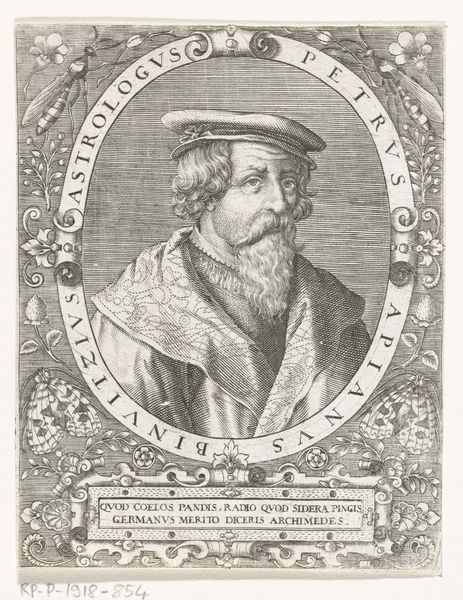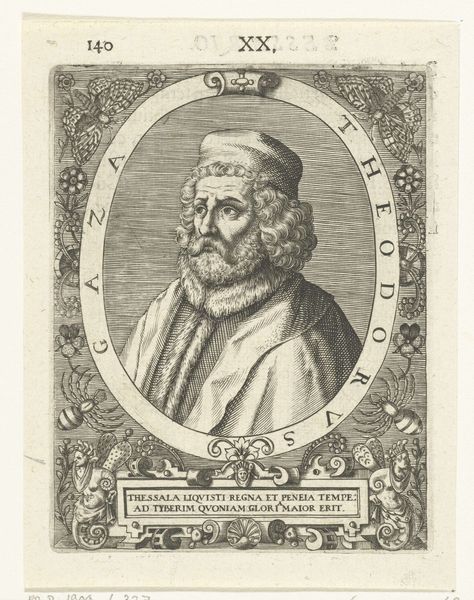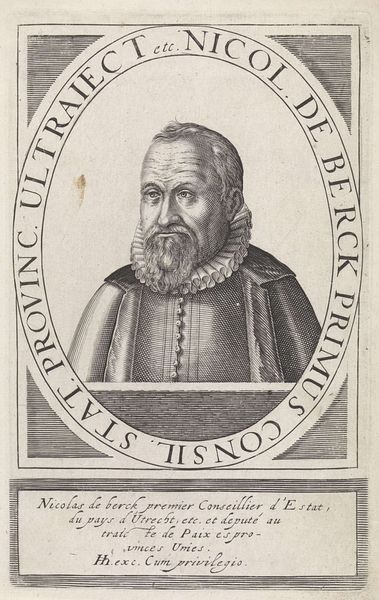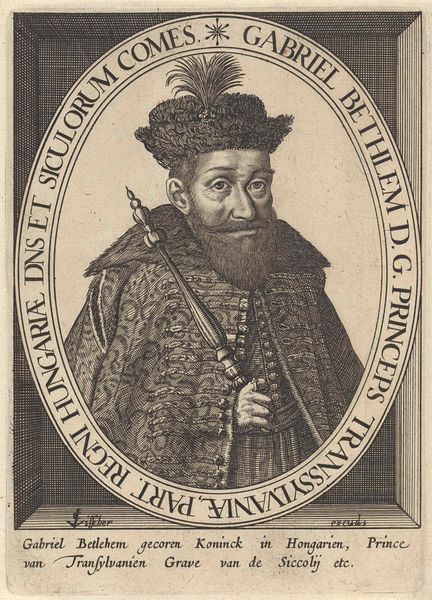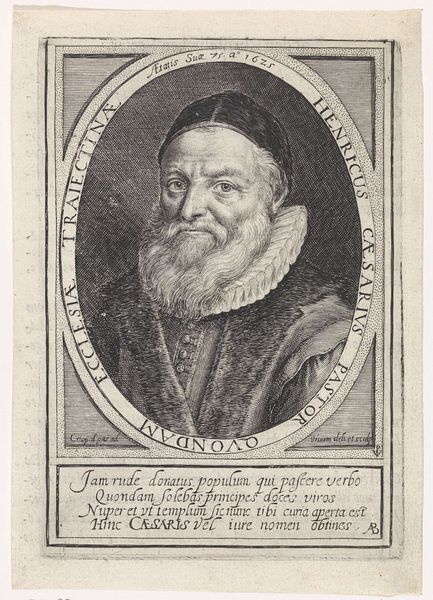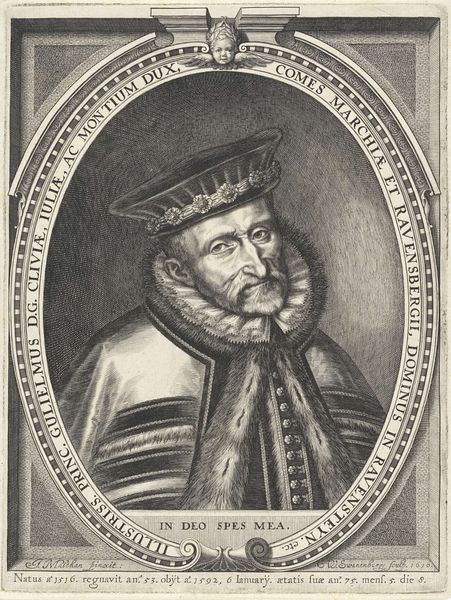
engraving
#
portrait
#
figuration
#
11_renaissance
#
northern-renaissance
#
engraving
Dimensions: height 173 mm, width 118 mm
Copyright: Rijks Museum: Open Domain
This print, made by Dominicus Custos around the turn of the 17th century, depicts the poet Helius Eobanus Hessus. It's an engraving, meaning that the artist would have used a tool called a burin to carve lines into a copper plate. The incised lines hold ink, which is then transferred to paper under great pressure. You can see the characteristic crispness of the lines, and the way they build up areas of tone. These are not traditional art materials, but industrial materials. Copper was mined, smelted, and planished into sheets for printmaking. The paper was made in mills. Consider the sheer labor involved in producing such a print. The level of detail is remarkable, especially given the small scale. Think about the social context implied by the work too: the print was a means of circulating images widely, a key technology of the early modern period, related to the rise of both capitalism and fame. It challenges the division between craft and fine art.
Comments
No comments
Be the first to comment and join the conversation on the ultimate creative platform.
